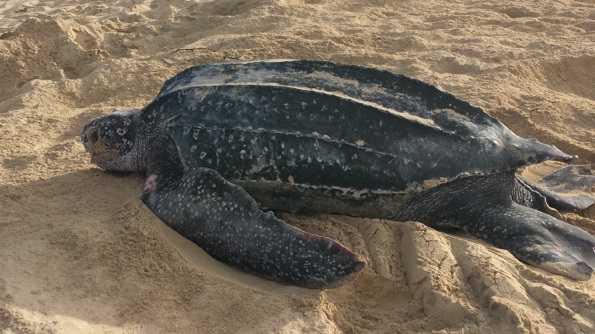Webinar: Assessing Threats to Leatherback Turtle Populations in the Atlantic
 © Kelly Stewart
© Kelly StewartLeatherbacks, like most of the six other species of sea turtle, declined dramatically in the late 20th century. Dr. Kelly Stewart's research is helping assess threats to leatherback turtle populations in the Atlantic.
Please join us for a lunchtime webinar with Dr. Kelly Stewart discussing her work using genetic techniques to assess threats to leatherback turtle populations in the Atlantic.
Date: Thursday, September 22nd, 2016
Time: 12 p.m. – 1 p.m. EST
For remote access:
Event number: 634 391 543
Event password: leatherback2016
For teleconference audio:
In the U.S. and Canada, dial 1-303-927-3275 or toll-free 1-855-214-7745.
For a list of global numbers, click here.
The conference code is 909 707 1631.
Summary
Through genetic analysis, we have determined that there are nine demographically independent populations of leatherbacks that nest on beaches in the Atlantic basin. Leatherbacks are considered Vulnerable in the Atlantic by the International Union for the Conservation of Nature, and the U.S. Endangered Species Act lists leatherbacks as endangered throughout their range. Assessing threats to individual populations is essential to determine status accurately.
Making an assessment of threats for a marine animal with transboundary migration habits is difficult. In particular, on foraging grounds or along migratory pathways, leatherbacks are susceptible to a variety of threats: bycatch in various fishing gear, ship strikes, natural predation (e.g., sharks), and entanglement in or ingestion of marine debris.
Using genetic techniques, we are able to evaluate individual leatherbacks throughout their range, no matter where they are encountered, caught, or stranded dead, and assign them to their population of origin. This helps us pinpoint population specific threats in order to improve management of individual jurisdictions. It also highlights where mitigation may be required, or where threats may need further scrutiny. We present findings from several studies that illustrate the utility of integrating multiple techniques for achieving comprehensive population assessments to better inform and develop management objectives.

